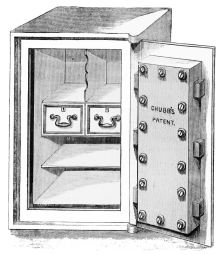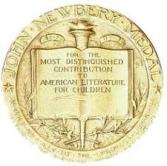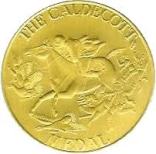This meeting will now come to order.
Old business:
The chairman requests a report on the Clem and Clyde Reading Comprehension project:
In the latest reading comp mini stories, fictional characters Clem and Clyde:
– have learned to juggle – shown proficiency walking with stilts –
– purchased backpacks – painted their bedrooms – participated in a tractor race –
– ventured into the cat tending business – visited a caboose museum in Canada –
I am continuing to provide a weekly edition of Clem and Clyde adventures and follow up questions. Independently, my son reads the stories and answers the questions. Is he comprehending what he is reading? YES! A continuation of the reading comprehension project is recommended.
The chairman requests a report on the tracking of sharks off the east coast of the USA:
We’ve been following a group of tagged sharks online at ocearch.org. Seriously, this is quite entertaining. Currently, the sharks have been circling the Gulf of St. Lawrence in Canada and are starting to head south to Florida. We have a new favorite shark: Breton. While other tagged sharks seem to hug the coast of eastern USA, Breton is zigzagging all over the the Atlantic – he has even propelled himself over to the Sargasso Sea (which we studied in August, 2017 – view the “Sea Hunt” post for proof positive). Breton is a scamp. A continuation of our Monday night shark tracking is recommended.
The chairman requests a report on current re-reads –
Surviving the Applewhites – I think this is our 4th time through Stephanie S. Tolan’s never-a-dull-moment treasure. It is about school projects, an uncontrollable goat, the cuisine of India, “The Sound of Music”, but mostly it is about family and creative passion and personal transformation and it is continually funny. We love this book and we will read it again.
Cheaper by the Dozen – My son and I seem to read this book about every other year, and as an educator, I benefit from the “pep talk” it delivers. I am not sure I can summon the high energy that Frank Gilbreth put into teaching his 12 kids, but his rollicking, unconventional, brassy verve inspires me. The book, published in 1948, was written by two of the Gilbreth children, Frank B. Gilbreth and Ernestine Gilbreth Carey.
It’s Halloween – My son and I read through Jack Prelutsky’s Halloween themed poem collection several times every October. At this point, we know all the words to every poem. This slender book is a welcomed part of our annual autumn experience.
New business:
The chairman requests a report on new books in the Cool School book basket:
Saving the Ghost of the Mountain – another engrossing journal by Sy Montgomery, documenting a research trip to to Mongolia (Mongolia!!! get the globe out) to track snow leopards. These darn snow leopards are nigh impossible to find; their pale spotted fur blends in too well with the surroundings. By the end of the book, although it is clear that the research team was hiking in snow leopard territory, not one had been spotted (the heartbreak of research). Nonetheless, this book was a pleasure to open every single night. If we couldn’t get up close and personal with a snow leopard we did become familiar with Mongolian ger housing and ibex goats (preferred gourmet treat for snow leopards).
Amazing Rivers, by Julie Agnone, illustrations by Kerry Hydnman – so smartly put together, lovely illustrations. This book covers more than 20 issues relating to rivers, illustrating these topics with specific rivers of the world. Maybe our favorite entry in this book: the New Meuse River (Netherlands) hosts the world’s first FLOATING DAIRY! It houses 40 cows, robots do the clean up, cow manure is recycled as fertilizer. This is not our first river book, but it is the best.
Cable Cars of San Francisco – a favorite family member has recently moved to San Francisco and we are so patiently waiting for him to take a series of selfies on a cable car. Is that too much to ask? In the meantime, we have contented ourselves with the quick read through of “San Francisco Cable Car”, by Julie Murray. A thin book with lots of really good photos (but not as good as a selfie from said favorite family member) and just enough information for us.
Key Player – 4th book in a series by Kelly Yang (we’ve previously read “Front Desk”, “Three Keys”, and “Room to Dream”). We don’t love opening this book every night, because we know we are going to be confronted with some tough realities. How about the tough reality of racism? We are heartened to know there are role models, like brave protagonist, Mia. Important book.
Funny business:
Tom Gates Epic Adventure – It is a happy day in our study room when we have a new Tom Gates book to laugh through. Author Liz Pichon’s perfect ensemble cast, fabulous doodles, non-stop originality captivates us on every single page. In this book, Tom desperately needs a haircut, is worried that he is the only one in class who isn’t invited to a birthday party, has to navigate between a family outing and the school “Tropical Disco”. I think we’ve read all 20 books in the series.
The chairman requests an unnecessarily complicated story problem:
Big excitement! The local diner now offers a new item on the kids menu: “Spell-a-Lunch”. To place an order, kid customers must create a 5 letter word from the diner’s alphabet menu. The lunch plate will thusly be filled.
A – apple slices B – burger C – carrots ’n’ celery D – dill pickles
E – egg salad sandwich F – fries G – grilled cheese H – hot dog
I – ice cream sandwich J – jello K – ketchup L – lemonade M – mini raisin box N – nachos O – olives P – peanut butter sandwich Q – quesadilla
R – radishes ’n’ ranch dressing S – sugar snap peas T – tomato juice
U – upside down cake V – vanilla wavers W – watermelon chunks
X – extra napkins Y – yogurt Z – zucchini bread
For example:
If the child orders a “SHARK” lunch, the plate will offer (S) sugar snap peas, (H) a hot dog, (A) apple slices, (R) radishes with ranch dressing, and (K) ketchup.
– What will be on the lunch plate if the kid orders:
The “FANCY” Lunch?
The “CLIMB” lunch?
– Now for the arithmetic part of the story problem:
1). If the “Spell-a-Lunch” concept is a gigantic hit, and the diner sells 50 a week, how much will the diner profit at the end of a year, if each “Spell-a-Lunch” costs the diner $3, and the diner sells each lunch for $7.
2). At the end of a year, will there be enough profit money for the diner to donate $1,000 to the local elementary school library? (answers at bottom of post)
To conclude the meeting, the chairman requests a few short and funny orchestral pieces:
- “Banjoland Buffoonery” – from Grant Kirkhope’s music score for the the 2008 video game, Banjo-Kazooie: Nuts & Bolts. A variety of instruments get their spotlight moment in Kirkhope’s zippy composition, making it easy for my son to recognize the sounds of the bassoon, clarinet, flute, oboe, and I think xylophone. Boisterously performed by the City of Prague Philharmonic Orchestra.
- “The Clog Dance”, from the comic ballet, La Fille Mal Gardée (essentially, The Poorly Supervised Young Lady), composed by Ferdinand Hérold in 1828. We have been smiling over this bit of music (via iPod) for a few months, and when I showed my son this video clip he was entranced. The ballet’s basic premise: young girl in the French countryside has found true love in the handsome Colas, but her widowed mother (traditionally played by a large man) wishes her to marry the Alain (think village idiot), son of the village’s wealthiest citizen. The “Clog Dance” hilariously puts the widowed mother front and center. BTW, the costuming in this production: charming.
- “The Typewriter” – yes, yes, yes, we know, all sorts of people have no idea what a typewriter is these days, but can one put together a list of humorous orchestral pieces without including Leroy Anderson’s out-of-left-field composition of 1950, “The Typewriter” ? No. Using the typewriter as percussion was inspired AND funny!
This meeting has been adjourned.
Welcome to the best part of my day!
– Jane BH
(Story problem answers:
The “FANCY” lunch – fries, apple slices, nachos, carrots ’n’ celery, yogurt
The “CLIMB” lunch – carrots ’n’ celery, lemonade, ice cream sandwich, mini raisin box, burger
1). $10,400 and 2). the diner can easily afford to donate $1,000)































































